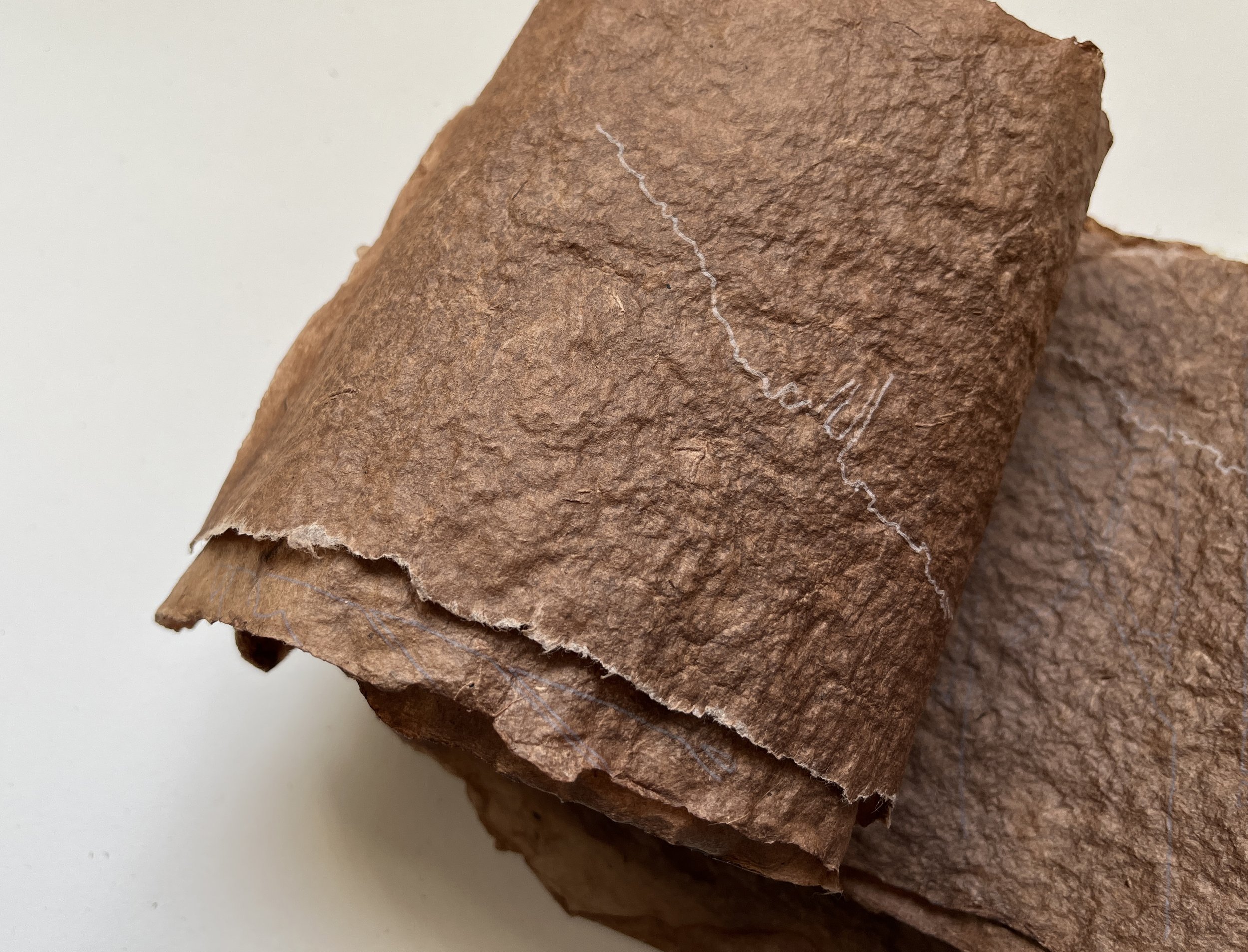Study for a Decomposing Hemlock
The eastern hemlock (Tsuga canadensis) is a coniferous tree native to the eastern United States and Canada. Like many other species indigenous to North America, the hemlock is threatened by a non-native insect, the hemlock woolly adelgid (Adelges tsugae; HWA). The aphid-like HWA was first observed in Richmond, Virginia on a tree imported from Japan and began spreading quickly in the 1990s.
Shenandoah National Park lost 95% of its hemlocks to the HWA starting in the late 90s. During an artist’s residency at SNP, I observed a unique, book-like decomposition pattern for the many eastern hemlock trees that fell or were cut down in the early 2000s (see video below). The sound of the birdsong echoed through the forest while I leafed through the page-like layers of decomposing bark.
Materials: Handmade abaca/kozo paper dyed with hemlock. Hemlock dye was made from branches pruned from neighbors’ trees in Birmingham, AL, not from trees in wild places.
This is a work in progress. Please check back to see the box and imagery associated with this piece.



